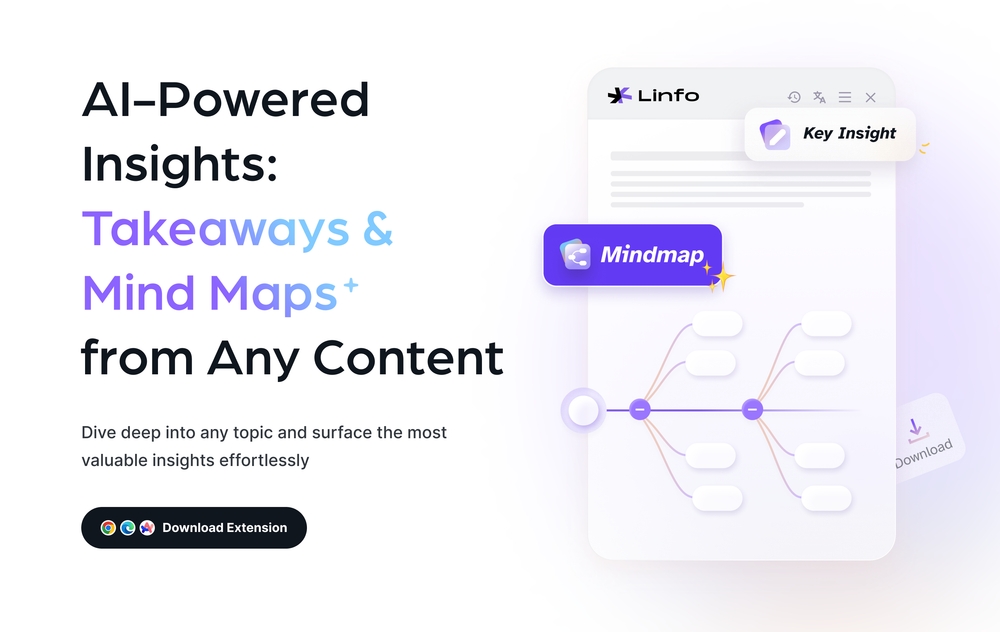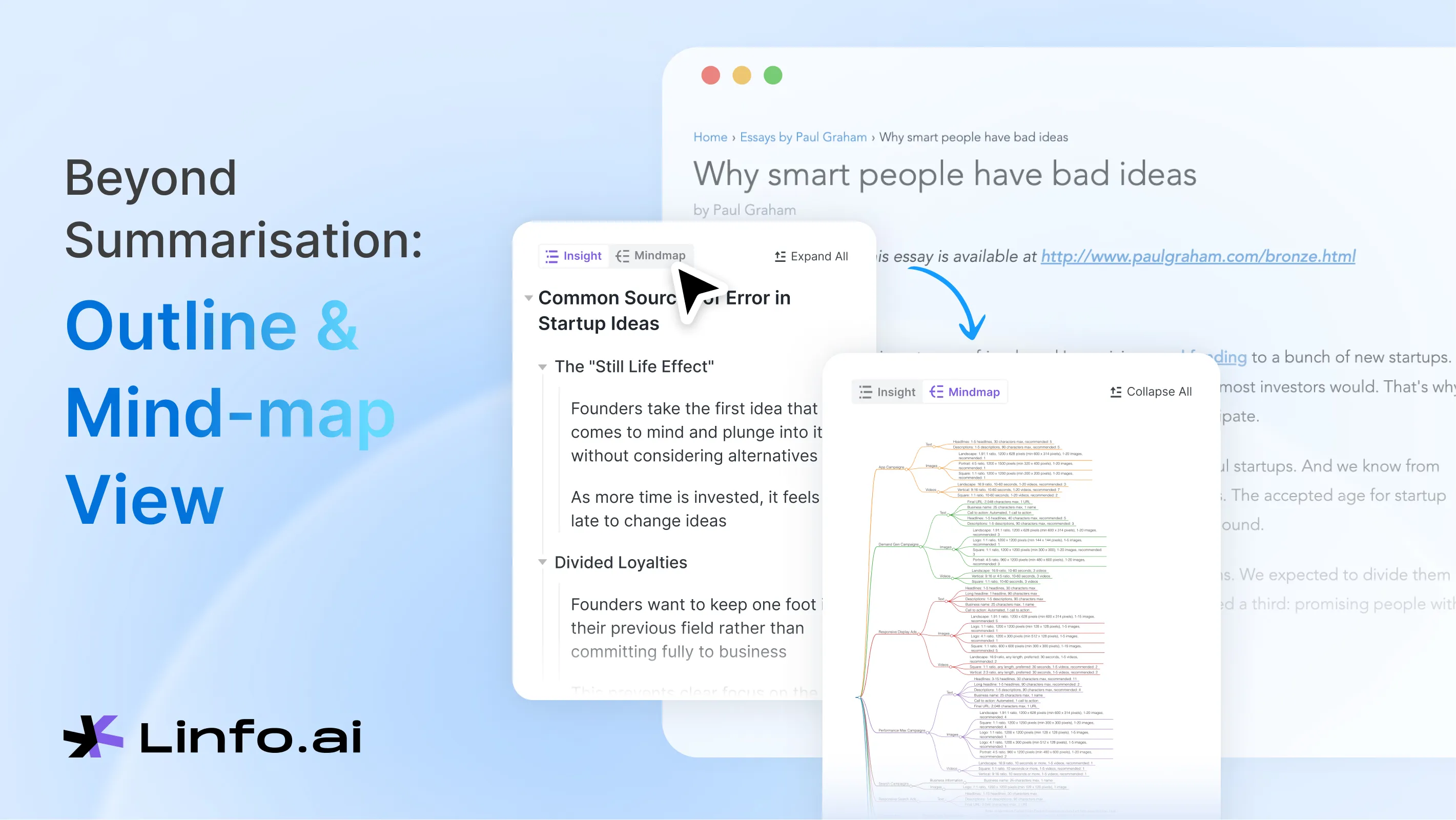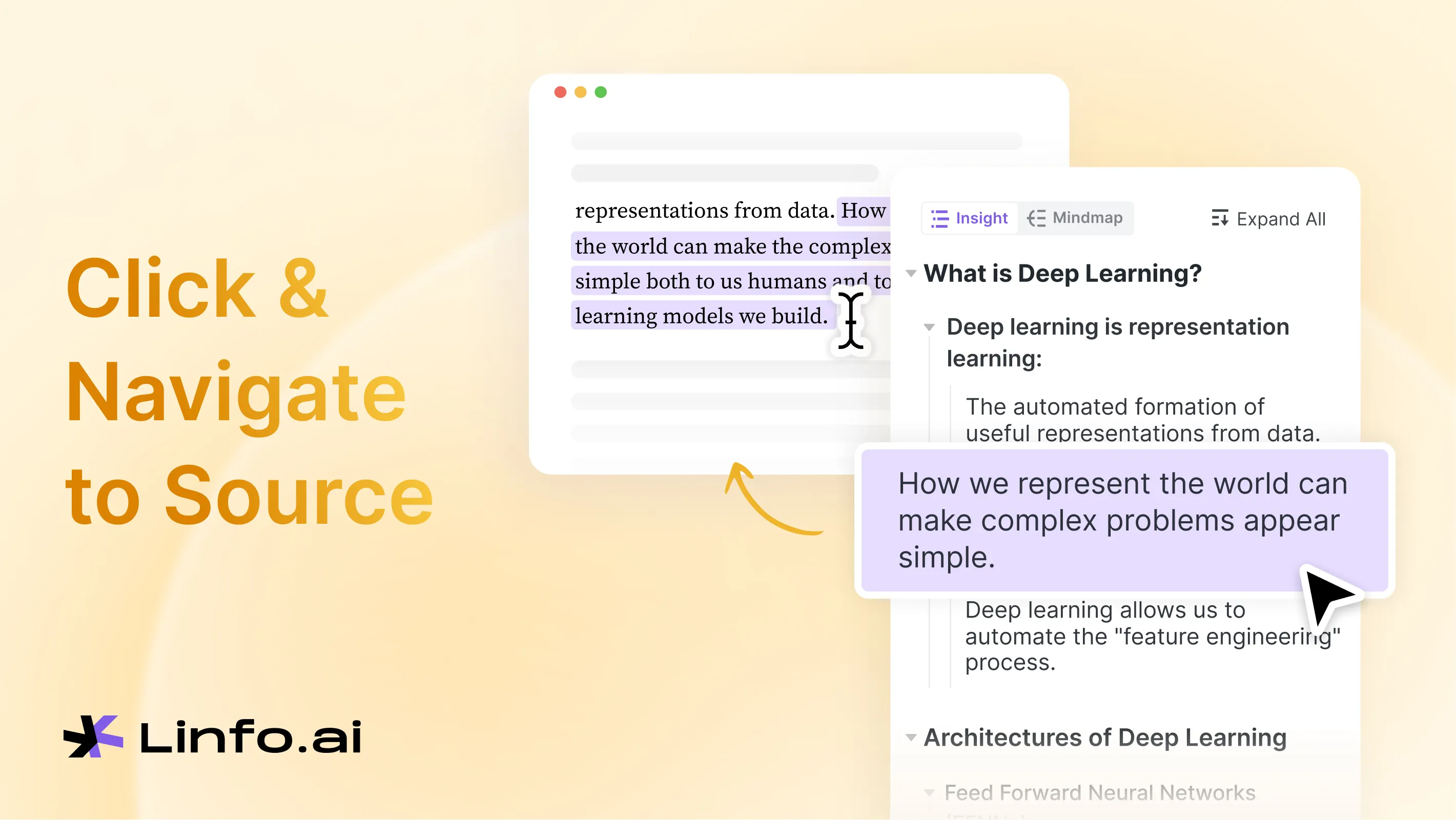Published
- 4 min read
Revolutionizing Web Reading with Linfo AI: A Deep Dive into the Chrome Plugin

In the age of information overload, efficiently processing and understanding vast amounts of online content has become a crucial skill. Enter Linfo AI, a Chrome plugin that leverages the power of Anthropic’s Claude 3 Haiku language model to transform how we interact with web-based information. This blog post will explore the key features of Linfo AI and delve into the technical aspects that make it a game-changer for researchers, students, and avid readers alike.
The Power of Claude 3 Haiku
At the heart of Linfo AI lies Anthropic’s Claude 3 Haiku, a state-of-the-art language model known for its speed and efficiency in handling daily tasks. This choice of model ensures that Linfo AI can provide rapid, accurate responses without compromising on quality, making it an ideal companion for web browsing and research.
Key Features of Linfo AI
1. Snapshot: Concise Summaries at Your Fingertips
One of Linfo AI’s standout features is its ability to generate 50-word summaries of any reading material. This “Snapshot” feature utilizes carefully crafted prompts to distill the essence of complex articles, research papers, or long-form content into digestible snippets.
How it works:
- The plugin analyzes the entire web page content.
- It uses prompt engineering techniques to instruct Claude 3 Haiku on generating a concise summary.
- The model processes the content and produces a 50-word summary that captures the key points.
This feature is particularly useful for quickly grasping the main ideas of an article before deciding to invest time in a full read.
2. Outline and Mind-map View: Structured Summarization

For those who prefer a more structured approach to information processing, Linfo AI offers an Outline and Mind-map view. This feature goes beyond simple summarization by providing a hierarchical representation of the content.
Key aspects:
- The plugin analyzes the document structure and content.
- It identifies main topics, subtopics, and their relationships.
- Claude 3 Haiku generates a structured outline or mind-map based on this analysis.
- Users can toggle between outline and mind-map views for different visualization preferences.
This feature is invaluable for complex documents, helping users quickly grasp the overall structure and key concepts without getting lost in the details.
3. Click-to-Source: Bridging Summary and Original Content

Perhaps the most innovative feature of Linfo AI is its Click-to-Source functionality. This feature creates a seamless connection between the generated summaries or outlines and the original text, enhancing the user’s ability to verify information and dive deeper into specific points of interest.
How Click-to-Source works:
- Content Preprocessing:
- The entire web page content is semantically chunked into meaningful segments.
- Each chunk is then embedded into a 512-dimensional vector space using advanced natural language processing techniques.
- User Interaction:
- When a user clicks on a bullet point in the summary or outline, it triggers the Click-to-Source feature.
- Vector Similarity Search:
- The clicked bullet point is converted into a query vector.
- A vector similarity re-ranking is performed, comparing the query vector against all the embedded chunks from the original content.
- Result Highlighting:
- The top-ranking chunk (most similar to the clicked point) is identified.
- This chunk is then highlighted in the source text, drawing the user’s attention to the relevant section.
This feature eliminates the need for manual searching, saving time and enhancing the reading experience by providing instant context and verification.
Technical Implementation Insights
While the full technical details of Linfo AI are proprietary, we can infer some key aspects of its implementation:
- Natural Language Processing (NLP): Advanced NLP techniques are used for content analysis, summarization, and structuring.
- Embedding Models: The 512-dimensional embeddings likely utilize a sophisticated embedding model, possibly a variation of transformers or BERT-like architectures.
- Vector Databases: To enable fast similarity searches, Linfo AI probably employs an efficient vector database or indexing system.
- Browser Integration: As a Chrome plugin, Linfo AI is built to seamlessly interact with web page DOM structures, allowing for content extraction and in-page highlighting.
- API Integration: The plugin likely communicates with Anthropic’s API to leverage Claude 3 Haiku for various text processing tasks.
Prompt Engineering
AI prompt engineering for content analysis is demonstrated through TLDR and outline generation prompts. The TLDR prompt aims for brief, insightful summaries, while the outline prompt creates structured mind maps. These prompts illustrate key principles: task-specific instruction, clear formatting guidelines, language consistency, and cognitive scaffolding.
Conclusion
Linfo AI represents a significant leap forward in how we interact with online content. By combining the power of advanced language models with intuitive features like Snapshot summaries, structured outlines, and Click-to-Source functionality, it offers a comprehensive solution for information processing and comprehension.
As we continue to navigate an increasingly complex digital landscape, tools like Linfo AI will become indispensable for professionals, researchers, and casual readers alike. The seamless integration of AI-powered analysis with user-friendly interfaces points to a future where technology not only presents information but actively helps us understand and interact with it more effectively.
Whether you’re conducting academic research, staying updated on industry trends, or simply trying to make sense of the vast amount of information available online, Linfo AI promises to be a valuable companion in your quest for knowledge and understanding.